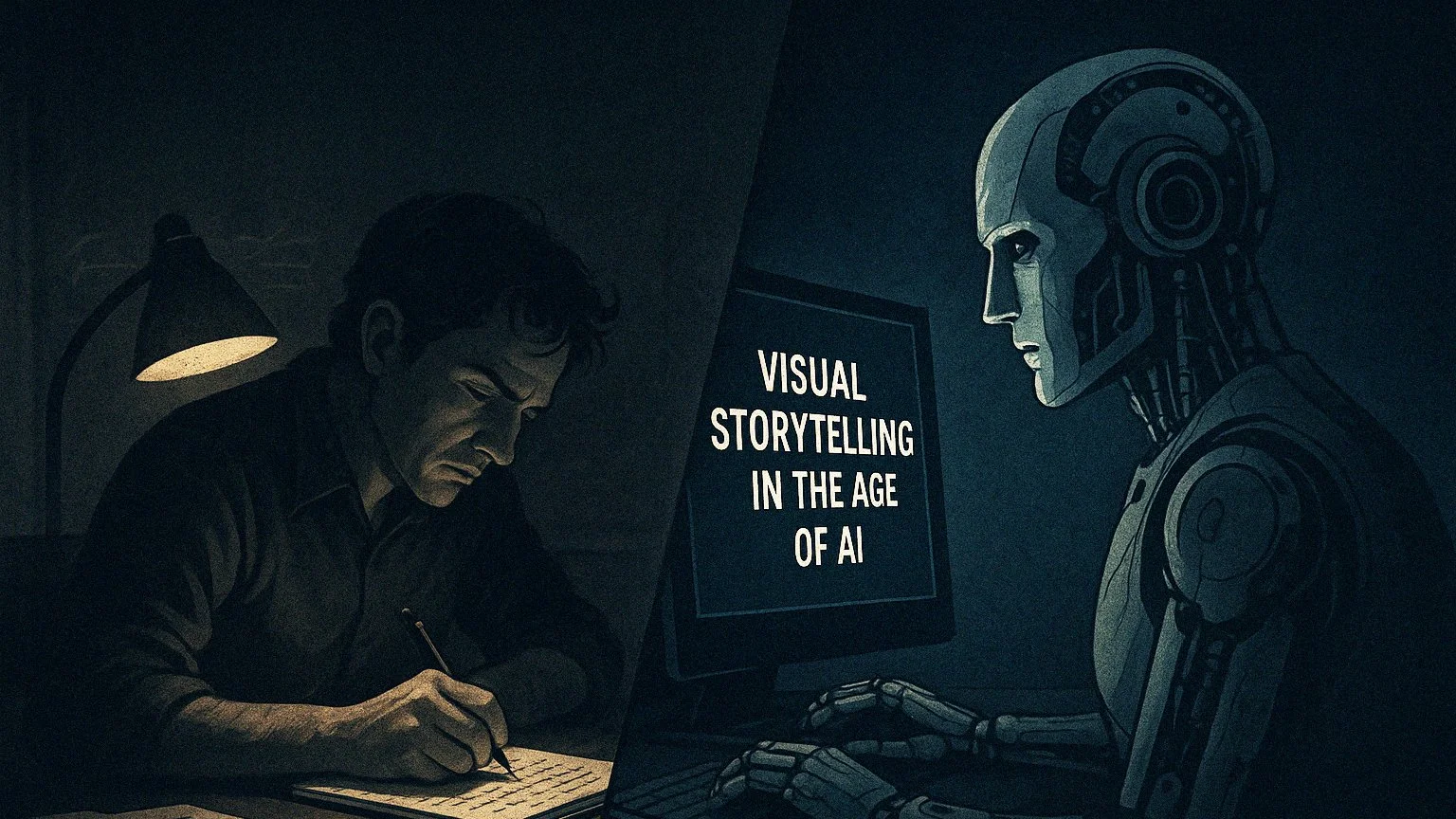Visual Storytelling in the Age of AI: A Future Rewritten?
We’re standing at a pivotal moment in creative history.
Artificial Intelligence is rapidly evolving from a futuristic concept to a practical tool—one that’s already reshaping industries, especially in the world of storytelling and media. But as AI becomes more integrated into the creative process, a critical question arises: Where does that leave visual storytelling?
There’s been significant pushback, and understandably so. Many argue that AI threatens creative jobs, disrupts traditional workflows, and devalues the deeply human experience of creating art. The Writers Guild strike was a powerful reflection of this anxiety. Writers—both up-and-coming and seasoned veterans—banded together in a rare show of solidarity. It was a moment of oneness in media, a collective declaration that creative labor must be protected, especially in the face of accelerating technological change.
And yet, even amid the strike and ongoing debates, studio heads and media executives continue to explore AI’s potential. Some are delaying new productions or reimagining their pipelines in anticipation of a future where AI tools can streamline—or even replace—major parts of the production process. The shift is no longer theoretical; it’s happening now, and it’s happening fast.
A striking example of this is Sony’s recent experiment with using AI to voice and animate characters in video games. According to The Verge, the company demonstrated a prototype of their iconic character Aloy (from Horizon Forbidden West) powered entirely by AI-generated voice and animation. While Sony claims they have no intention of replacing human actors, the demonstration itself speaks volumes. Is this just a showcase of what’s technically possible—or a quiet rehearsal for a future where digital characters are created and voiced without a human in the booth? It's hard to say whether this is an experiment or a blueprint, but either way, it signals a shift in how storytelling is being reimagined behind the scenes.
Personally, I sit somewhere in the middle. I see both the promise and the peril.
AI unlocks new doors for storytellers. It lowers the barrier to entry, empowering creators with limited budgets or technical skills to bring their visions to life. Visual storytelling, once confined to teams of animators, editors, or large production houses, can now begin in a browser. A single individual can create, iterate, and share rich narratives faster than ever before.
But at the same time, it also closes doors. It compresses job markets. It blurs lines between originality and replication. It introduces a new creative economy where large-scale productions might favor automation over artistry, speed over craft.
So where are we headed?
The future of visual storytelling in the AI era will likely be defined by tension—between innovation and preservation, between democratization and disruption. Those who adapt may find themselves empowered by new tools, while those invested in traditional roles may face shrinking opportunities.
Yet perhaps the goal isn’t to resist the tide entirely—but to shape it. To ask better questions. To advocate for ethical implementation. To build a future where AI doesn’t replace storytellers but enhances them.
Because at the heart of every story—whether generated by a pen, a camera, or a line of code—is a human desire to connect. And that, for now, is something AI still can’t replicate.
